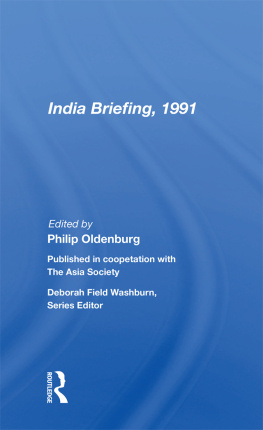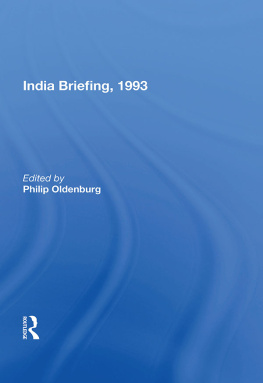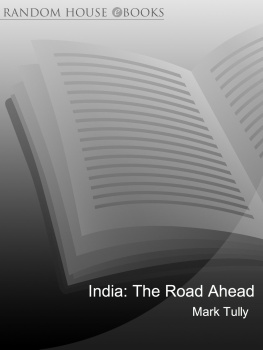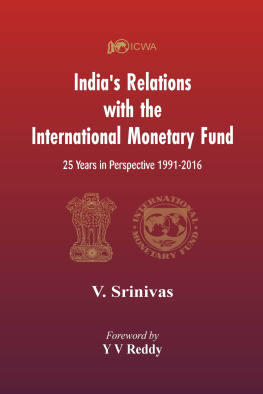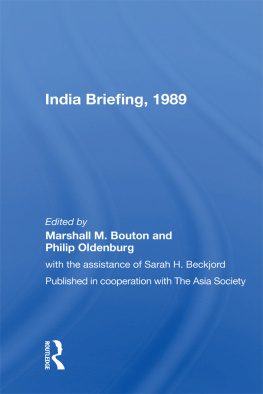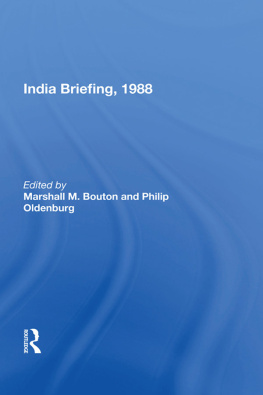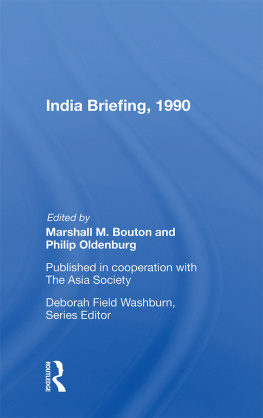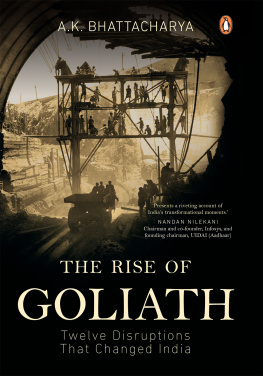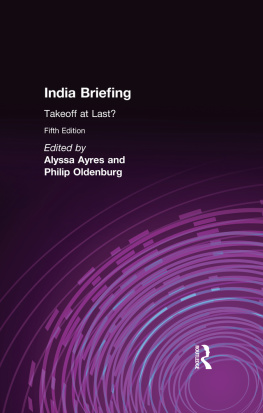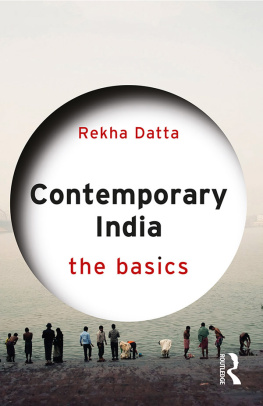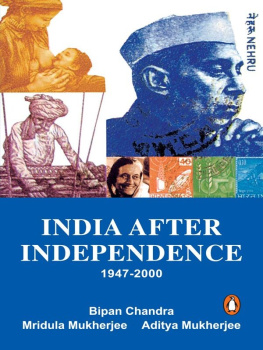India Briefing, 1991
India Briefing, 1991
edited by
Philip Oldenburg
Published in Cooperation with
The Asia Society
Deborah Field Washburn,
Series Editor
First published 1991 by Westview Press, Inc.
Published 2018 by Routledge
52 Vanderbilt Avenue, New York, NY 10017
2 Park Square, Milton Park, Abingdon, Oxon OX14 4RN
Routledge is an imprint of the Taylor & Francis Group, an informa business
Copyright 1991 by The Asia Society
All rights reserved. No part of this book may be reprinted or reproduced or utilised in any form or by any electronic, mechanical, or other means, now known or hereafter invented, including photocopying and recording, or in any information storage or retrieval system, without permission in writing from the publishers.
Notice:
Product or corporate names may be trademarks or registered trademarks, and are used only for identification and explanation without intent to infringe.
Library of Congress ISSN: 0894-5136
ISBN 13: 978-0-367-01234-2 (hbk)
Contents
PHILIP OLDENBURG
PHILIP OLDENBURG
STEPHEN PHILIP COHEN
GEORGE ROSEN
ELEANOR ZELLIOT
PHILLIPS TALBOT
Guide
To many outside observers, the events of the past year in India seemed chaotic. There were violent challenges and harsh central responses in Punjab, Assam, and Kashmir; communal rioting over the proposed construction of a Hindu temple at a sixteenth-century mosque site in Uttar Pradesh; and anguished protests over the V. P. Singh government's endorsement of special treatment for disadvantaged castes, which contributed to that government's fall in November. The new government, headed by Chandra Shekhar, collapsed so quickly that its policies never took hold. India has no budget for the current fiscal year, further threatening an economy already plagued by inflation and a balance-of-payments crisis. With Rajiv Gandhi's assassination on May 21, India's political and economic future appears more uncertain than ever.
India Briefing, 1991 aims to help readers make sense of these and other developments and to provide an up-to-date assessment of India's present and future course. This year's volume again presents comprehensive analyses of politics and the economy. In addition, it examines India's perception of its international role in relation to post-Cold War global realignment, describes current social, political, and literary movements among India's "Untouchables," and reviews the ongoing struggle over Kashmir. The detailed chronology of the events of 1990 is intended to be useful to researchers, while the glossary will be helpful to those less familiar with India and Indian terms.
The Contemporary Affairs Department of The Asia Society prepares India Briefing and its companion volumes, China Briefing and Korea Briefing, and copublishes them with Westview Press. The Asia Society is a nonprofit, nonpartisan educational organization dedicated to increasing understanding of Asia and its importance to the United States and the world at large.
The Society wishes to thank the authors for their fine contributions. Special credit for this year's book goes to Philip Oldenburg, who served double duty as author and editor. We continue to value our working relationship with Susan McEachem, Alison Auch, and their colleagues at Westview Press.
Again this year, Carolyn Kreuger did an excellent job of preparing the chronology. She and fellow publications intern Rekha Shukla worked diligently to make the chapters accurate and accessible to general readers. Andrea Sokerka efficiently prepared the manuscript for publication.
Marshall M. Bouton
Deborah Field Washburn
The Asia Society
May 1991
South Asia
India
Philip Oldenburg
The Indian polity today lacks coherent direction and is deeply troubled. As militancy and instability have grown the violent forces of tradition seem again to be on the rise. Even acknowledging India's many infrastructural strengths, India's future looks dark indeed.
Herbert G. Hagerty, "[India's] Chronic Problems Near a Boiling Point," Asian Wall Street Journal Weekly, March 14, 1991.
Politically sophisticated Indians... express a deep sense of defeat, an alarmed awareness that the future is not only dark but profoundly uncertain.... The crisis is upon India now. Its manifestations range from the uncertainties of Mrs. Gandhi's leadership... to the powerful resurgence of political Hinduism;... from the language dispute, dormant but ever dangerous, to the scattered flashes of communal rioting.... These are sparks in a mounting wind.... In India's circumstances of resources and population... stagnation would be an achievement, and even that seems now to be beyond her.
Neville Maxwell, "India's Disintegrating Democracy," Times (London), January 26 and 27, 1967.
There is never a shortage of wise analysts who see clearly the disintegration, stagnation, and violent turmoil that India seems to face year after year, decade after decade. This past year's events appear to point downward and backward, as it were: declining rates of economic growth and mounting long-term economic problems; social and political tensions manifest in Hindu-Muslim rioting, the resurgence of Hindu nationalism, and continuing separatist movements in Kashmir, Punjab, and Assam, with the death toll setting new records; politicians making and breaking governments, seemingly more interested in occupying office than in statesmanship, while the country's problems at home and abroad become worse.
And yet, India has made startling advances since Maxwell wrote nearly 25 years ago. A country that had to import food grain to stave off famine now has ample buffer stocks of domestically grown grain, and its citizens can get, on average, more, and more favored, grain (wheat or rice instead of "coarse" grains like millet). There was not even scarcity, let alone famine, in the worst drought of the century, in 1987-88. Population has continued to grow, but the rate of growth has slowed slightly while economic growth has accelerated, so that the percentage of Indians (though not the absolute numbers) living in severe poverty has declined significantly. There is now a 150-millionstrong middle class, living comfortably, using motor vehicles, watching television, and consuming soft drinks. In 1967 India was a terribly weak country internationally, humiliated by the Chinese invasion in 1962 and barely able to fight Pakistan to a stalemate in their 1965 war, dependent on U.S. food aid and Soviet and American technical assistance. Today, India is militarily dominant in South Asia and can confidently attempt to influence world events in international arenas. Maxwell could write in 1967, on the eve of the fourth parliamentary election, that it was "surely the last" and that "the great experiment of developing India within a democratic framework has failed." The May 1991 parliamentary election is India's tenth, and India's democracy has survived a spell of quasi-authoritarian rule during the Emergency of 1975-77, allowed the alternation of political parties in power both in states and central government, and opened up to leaders of a new generation and to new political forces, such as grass-roots voluntary action organizations. Measured as progress from where India began at independence in 1947, these are impressive achievements.
Perhaps now, though, the pundits have it right: maybe this time, the future really is dark. While India has approached goals of substantial economic and military self-reliance, it is far from reaching its goals of eliminating poverty and ignorance (the absolute numbers of the poor and illiterate have grown) and achieving social justice. Discrimination against Untouchables and other "backward" groups remains a problem, as does discrimination and worse against women: the provisional figures of the 1991 census show that the sex ratio has declined even further, to 929 women per 1,000 men, indicating what could be called murder by neglect of female children. A weakening industrial economyand bad luck with the monsoons, which remain a very significant factor despite the impressive expansion in irrigated areacould make for gloomy prospects indeed. Still, it is worth our while to be skeptical of predictions of collapse and despair, not to the point of expecting India to emerge suddenly and triumphantly as a bright promised land, but reserving our judgment on the character of the situation the next years will bring.


